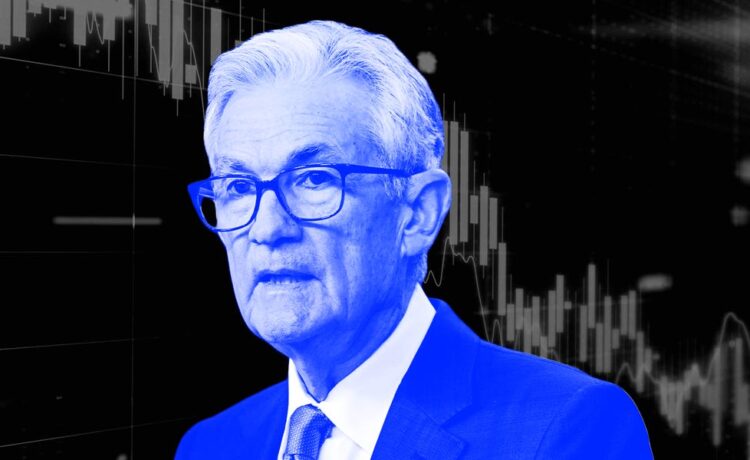- Interest rates could be in the perfect range for markets right now, Morgan Stanley’s CIO said.
- The Fed left interest rates unchanged following its January policy meeting.
- Inflationary pressures could mean that future rate cuts aren’t coming for a while, forecasters say.
The Federal Reserve’s decision to keep interest rates level after its policy meeting this week was probably the right call, as rates already look like they’re in the “sweet spot” for markets, according to Morgan Stanley’s top stock strategist.
Mike Wilson, the chief investment officer at the bank, said he believed rates were already hovering in the perfect range for stocks. Rates in the 4%-4.5% window are ideal, as they support corporate earnings while managing inflation pressures in the economy, he said in an interview with Bloomberg on Friday.
“We’re right at it, right now as we speak,” Wilson told the outlet. “I mean, that’s kind of the line in the sand where if rates go higher, even if growth is better, that’s going to restrain multiples. So what we really need is sort of that sweet spot between 4%, 4.5%, where growth is not falling off a cliff, the Fed is doing their thing.”
The central bank opted to keep interest rates level at the conclusion of its policy meeting this week — a move that seemed to defy the wishes of President Trump, who has said that interest rates are “far too high.” He said he would demand rates be lowered immediately in an address to the World Economic Forum last week.
But the Fed has already eased rates substantially, Wilson noted, with central bankers dialing back the target range of the Fed funds rate a full percentage point in 2024.
Markets, meanwhile, are eying potential inflationary pressures stemming from some of Trump’s policies, like his push to levy steep tariffs on US imports. Bond yields spiked in the weeks leading up to Trump’s inauguration, a sign that investors are weighing inflation risks and pricing in higher interest rates in the future.
“I’m not sure that pausing is really all the bad for stocks in the short term,” Wilson added of the Fed decision.
Other Wall Street forecasters have suggested that the Fed has little room to cut rates further, given the strength of the US economy. Even as borrowing costs stay elevated, real GDP grew at a solid 2.3% clip in the fourth quarter, according to advanced estimates from the Commerce Department.
The job market also remains on solid footing. The economy added 256,000 jobs in December, well above the expected 164,000.
On Friday, personal consumption expenditures inflation data, the Fed’s preferred measure, showed prices rose 2.6% year-over-year in December, accelerating from the prior month’s 2.4% pace.
“Q4 GDP data reveal why the fed needed to cut the funds rate, why they do not need to cut it further,” Steven Blitz, the chief US economist at TS Lombard, wrote in a note on Thursday. “The first round messaging from any GDP report is its implication for current quarter growth. In this regard, with the 100BP cut in financing costs in Q4, the message is continued growth.”
“With still stubborn inflation and a very strong economy and labor market, as the Federal Reserve suggested on Wednesday, more time is needed to allow inflation to settle down before the Fed can cut rates again,” Clark Bellin, the chief investment officer at Bellwether Wealth, said.
Investors have also pushed out their expectations for another rate cut. Markets don’t see another 25 basis-point cut happening until June, with a 47% chance that rates will be a quarter-point lower by then, according to the CME FedWatch tool.





